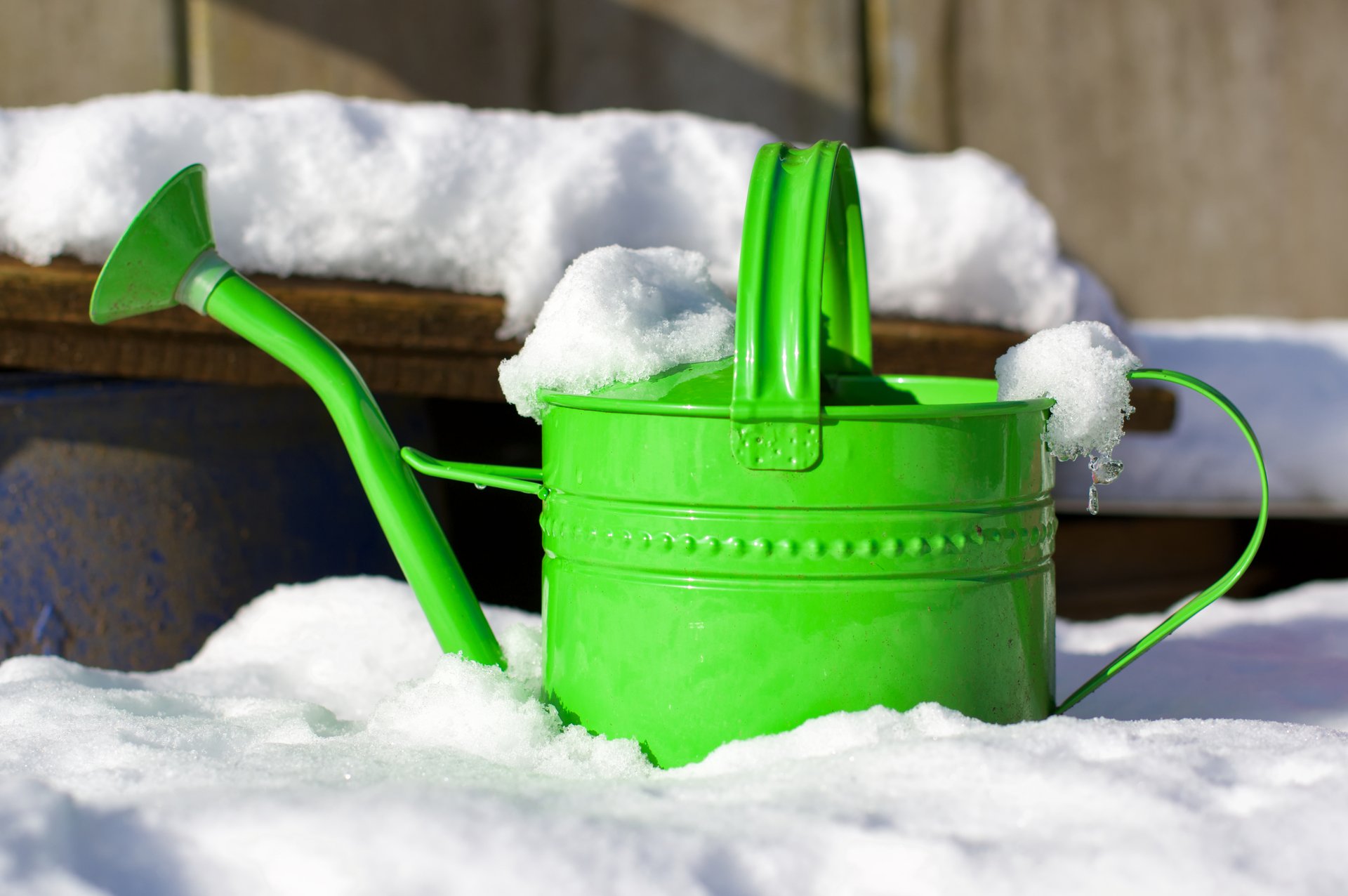
Giving your garden a little TLC this fall will pay you back next spring — and for a long time to come. Preparing soil for winter protects it and makes spring planting easier.
These seven jobs will get your garden in shape for winter:
1. Keep a few crops going
Depending on where you live, you can keep some vegetables growing into and maybe through the winter, especially if you buy varieties recommended for winter harvesting. Typical winter garden crops include:
- Spinach
- Tatsoi — a hardy Asian green also called spinach mustard
- Kale
- Leaf lettuce
- Mâche
- Arugula
- Carrots
- Leeks
2. Clean up
Pull spent plants from the ground. Prune those that will stay. Rake up debris to eliminate homes for plant diseases. Put healthy plant material in the compost. Double bag diseased or infested plants and dump them in the trash. Composting diseased plants spreads disease.
Pull up and store tomato cages, stakes and ties. Gather garden ornaments and store them too.
3. Spread compost
Compost feeds microbes that nourish your garden. Spread compost or mulch or both — first compost, then mulch — atop the soil in order to:
- Prevent soil loss to wind and rain
- Protect and insulate it from freezing
- Conserve moisture
- Promote good soil structure
- Prevent buried weed seeds from germinating in spring
When you’re ready to sow seeds, “use a garden hoe or a rake and make a line in the mulch and plant your seeds directly in the soil,” says The Prairie Homestead.
4. Plant a cover crop
Seeded into the soil in fall, a cover crop protects the soil in winter. Gardeners turn cover crops into the soil in spring.
Not everyone has room for a cover crop, but if you plant one it delivers a multitude of gifts, such as:
- Suppressing weeds, reducing your work in spring
- Preventing soil erosion, helping retain precious topsoil
- Keeping soil microbes alive and ready to spring into action with spring planting
- Adding rich “green manure” when turned into the soil
- Enhancing soil’s ability to hold water, breathe and resist compacting
- Helping control garden pests by supporting populations of beneficial insects
- Looking a whole lot prettier than bare dirt
Common cover crops include various grasses — oats and rye, for example. Legumes like clover and vetch (in the pea family) deliver extra value: They pull nitrogen out of the air so that, when turned into the garden, they renew soil robbed of nitrogen by other garden crops.
Ask your local cooperative extension office which cover crops work best where you live.
5. Think of the birds
Birds will love foraging for flower seeds in your garden this winter. They particularly love sunflowers, berries, black-eyed Susans and coneflowers, according to HouseLogic.
6. Gather seeds for next year
You’ll save money and ensure your favorite plants will be around next year by harvesting their seeds this fall:
- Save ripe seeds from disease-free plants only.
- Don’t bother with hybrids. Even if the seeds do germinate, they won’t reproduce the plant you want.
- Put seeds in envelopes or glass jars. Store them in a dry place and keep them free from fluctuating temperatures. They may last a year or longer, depending on the plant. GardenWeb has many seed storage ideas.
7. Get a head start on spring
The work you’ve done in fall will make it easy to get going on your spring garden. If it’s nearly warm enough to plant and you want to hurry things along a little, warm up the ground by raking mulch to one side, exposing the soil to the sun.
For more tips, read “5 Ways to Save on Gardening” and “Enjoy Great Food From Your Garden — and Save Money.”
Which gardening secrets work in your area? Share with us in comments below or on our Facebook page.




Add a Comment
Our Policy: We welcome relevant and respectful comments in order to foster healthy and informative discussions. All other comments may be removed. Comments with links are automatically held for moderation.